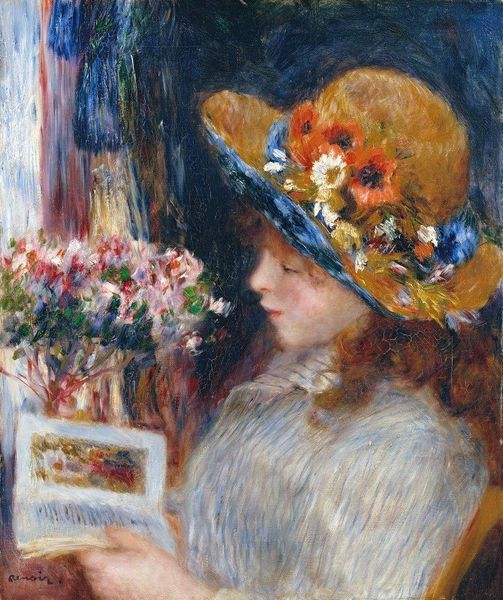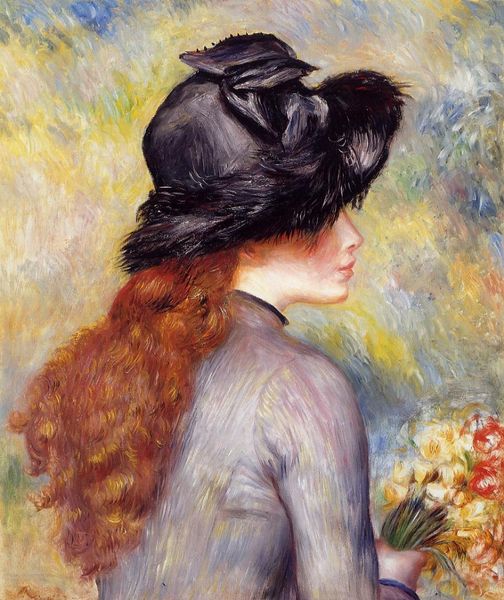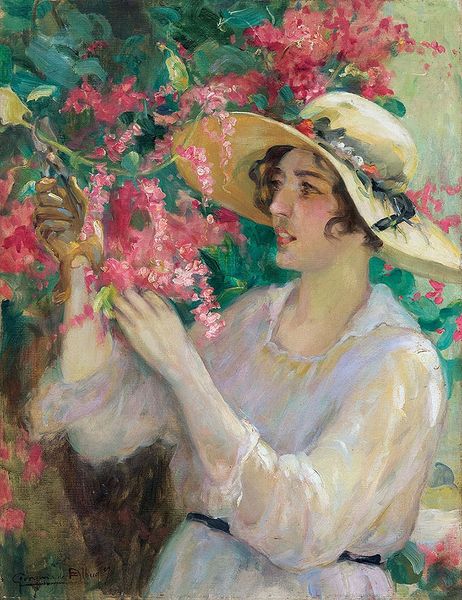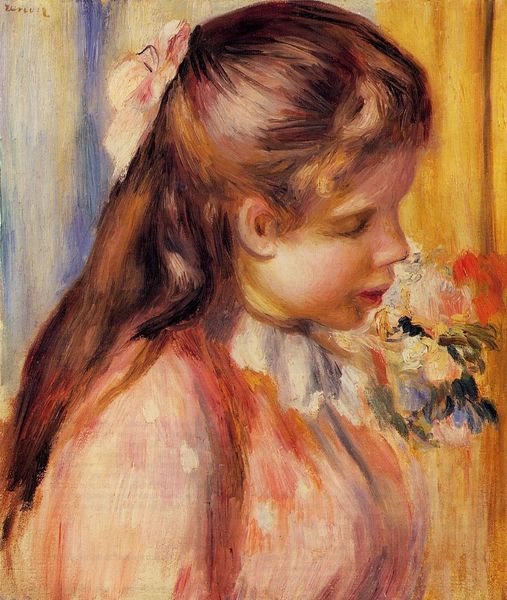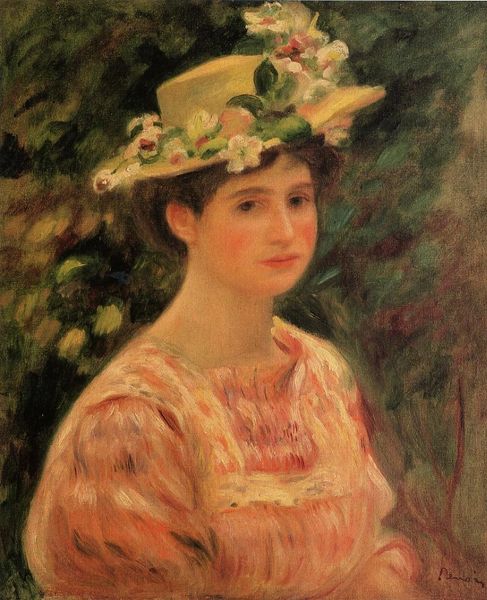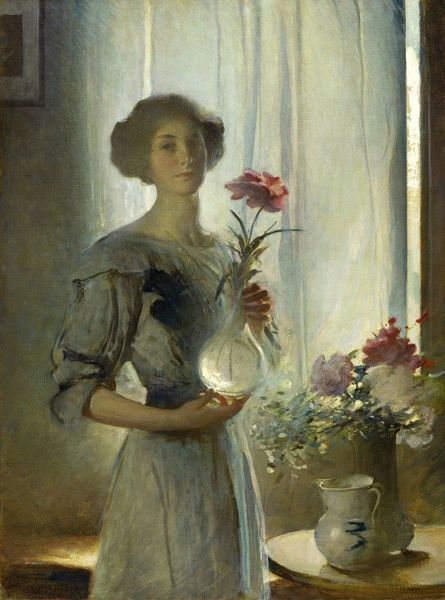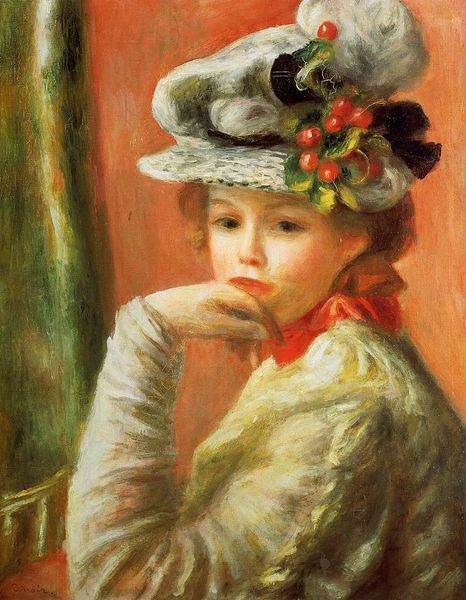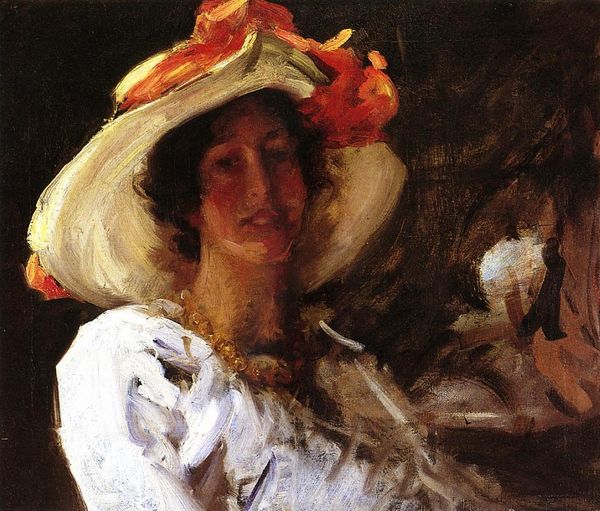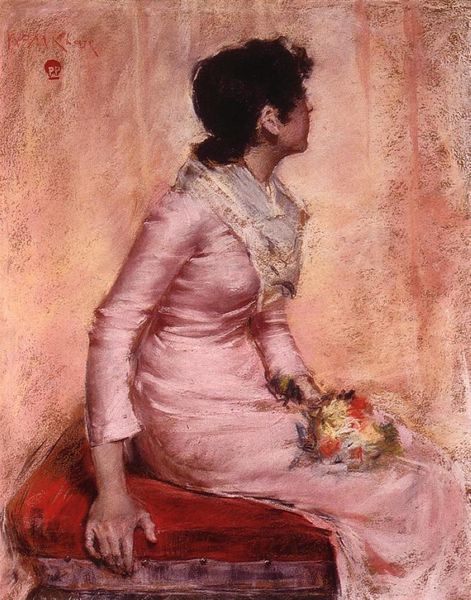
Copyright: Public domain
Jozsef Rippl-Ronai painted “Portrait of Mrs. Pataki” in an indistinct year, employing a soft, impressionistic style to capture his subject. Rippl-Ronai's artistic journey took him from Hungary to Paris, where he encountered the Nabis group, whose influence is palpable in the work’s intimate and decorative qualities. The woman's identity is central to understanding the portrait's context. Mrs. Pataki embodies the era's evolving ideals of femininity. The rose in her gloved hand and her delicate profile suggest both beauty and a certain societal status. Rippl-Ronai navigates the established conventions of portraiture, but with a subtle, modern twist that complicates traditional representations. The muted colors and softened edges evoke a dreamlike quality, distancing the portrait from strict realism. This piece reflects the societal norms of the era, yet it also explores the emotional and personal dimensions of its subject. It invites us to consider the silent narratives held within the delicate balance of image and identity.
Comments
No comments
Be the first to comment and join the conversation on the ultimate creative platform.
